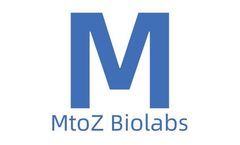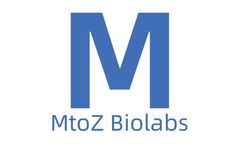Refine by
Disease Progression Articles & Analysis
74 articles found
However, the same proteolytic activity that protects against pathogens can, when unregulated, contribute to tissue injury, autoimmune inflammation, and chronic disease progression. In recent years, recombinant ELANE protein has become an indispensable tool for researchers studying neutrophil function, protease regulation, and disease ...
They constitute an intricate "glycocode" that orchestrates numerous cellular functions from embryonic development to immune regulation and disease progression. N-Glycan Profiling: Beyond the Basics N-Glycan Profiling reveals the remarkable complexity of these structures that anchor to asparagine residues. ...
The project can enhance therapeutic results while monitoring treatment responses and disease progression, thus providing crucial support to oncologists. ...
Their size, ease of handling, and well-characterized immune system make them ideal candidates for studying disease mechanisms and therapeutic interventions. Understanding the cytokine and chemokine profiles in rats can provide insights into human diseases, as many of the biological pathways are conserved across species. ...
This is particularly crucial for developing targeted therapies and understanding disease mechanisms, as many neurological disorders exhibit species-specific features that limit translatability. Applications in Research HA-c can be employed in various research applications, including: Disease Modeling: By exposing HA-c to pathogenic factors or genetic ...
Each of these targets the malignancy through different mechanisms, offering multiple ways to tackle the disease. Chemotherapy APIs function by disrupting cell division processes, which inhibits the rapid replication of cancer cells. ...
In recent years, the rise of drug-resistant cells has emerged as one of the most significant challenges in the field of medicine, particularly in oncology and infectious diseases. The effectiveness of current therapies is often hindered by the ability of certain cell populations to develop resistance, leading to treatment failure and disease ...
Disruptions in these controls can lead to uncontrolled cell division, a hallmark of cancer and other diseases. Cell cycle progression is orchestrated by key proteins, including cyclins, cyclin-dependent kinases (CDKs), and tumor suppressors. ...
A key aspect of studying the immune system involves analyzing cytokines, chemokines, and growth factors—molecules that regulate immune responses and influence disease progression. The Mouse Luminex Cytokine Assay has emerged as a cutting-edge technology for high-throughput, sensitive, and accurate cytokine analysis, offering researchers unparalleled ...
Why Is NAD/NADH Analysis Important? Metabolic Health and Disease Research Alterations in NAD/NADH levels are associated with a wide range of diseases, including cancer, diabetes, neurodegenerative disorders (e.g., Alzheimer’s and Parkinson’s), and mitochondrial diseases. ...
This approach is especially beneficial for investigating diseases with immune dysregulation, such as cancer, autoimmune disorders, or infectious diseases, where multiple cytokines orchestrate pathological processes. ...
Non-alcoholic fatty liver disease (NAFLD) has emerged as a significant public health concern, associated with obesity, insulin resistance, and a spectrum of metabolic disorders. ...
This mimetic action allows researchers to enhance or restore the expression of target genes that are otherwise downregulated in diseases such as cancer, neurodegenerative disorders, and cardiovascular diseases. ...
This ability to visualize cellular processes in real time provides insights into the progression of diseases and the effectiveness of therapeutic agents. In developmental biology, these cell lines facilitate the study of gene regulation during different stages of cell differentiation. ...
Clinical trials are the backbone of modern medicine, responsible for bringing innovative, safe, and efficient treatments to market after rigorous testing and evaluation. However, the conventional process of conducting these trials has often been long, expensive, and fraught with inefficiencies¹. The advent of predictive analytics is reshaping the landscape of clinical trials, ushering in a ...
Observing such differential expression is crucial for understanding cellular physiology and disease mechanisms. For example, some proteins may be upregulated or downregulated in health and disease states, or between normal and treated cells.Detection MethodsThe most commonly used technique is mass spectrometry, particularly liquid chromatography-tandem mass ...
Signal Transduction ResearchBy detecting the phosphorylation level of specific proteins, the intracellular signal transduction pathways can be studied.2. Disease Mechanism ResearchProtein phosphorylation plays crucial roles in many diseases, including cancer, neurodegenerative diseases, and cardiovascular diseases. Studying ...
Meanwhile, it's a useful tool for studying disease occurrence and progression, pharmacological action, bio-developmental molecular mechanisms, and more. ...
This knowledge is vital when developing therapeutics, such as vaccines, or studying disease progression and drug resistance. Clonality analysis services also play a central role in quality control in biotechnology. ...
Among them, glycoproteins are an essential biomarker that plays a key role in many biological processes, including disease onset, progression, and treatment response. The Tandem Affinity Purification (TAP) of glycoprotein is an efficient detection method.What Is a ...











